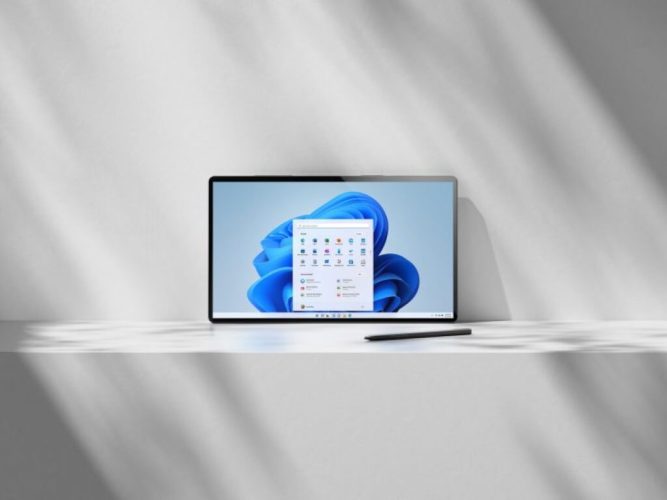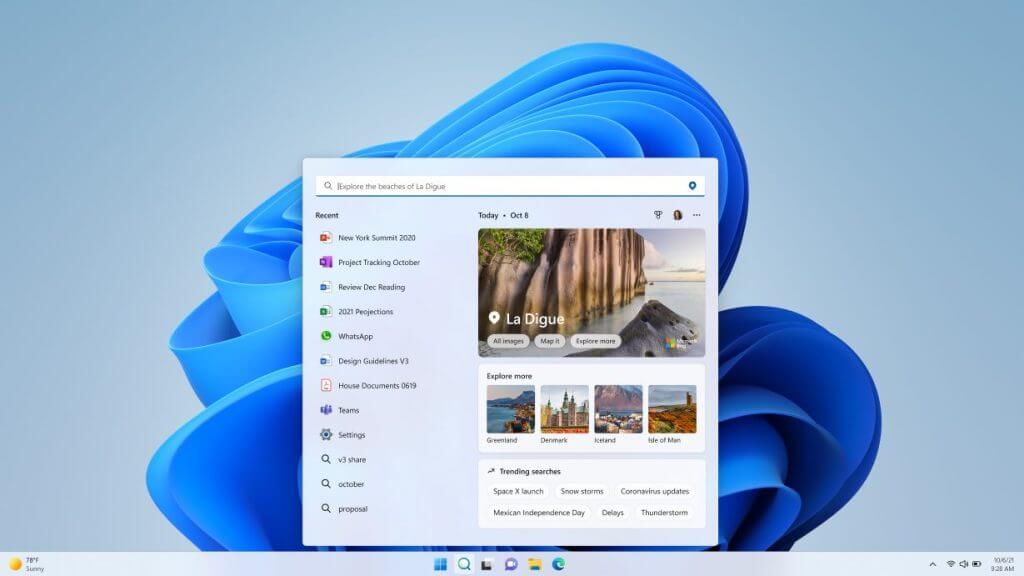June’s optional Windows 11 update delivers a new Search Highlights feature to more desktops
3 min. read
Published on
Read our disclosure page to find out how can you help Windows Report sustain the editorial team Read more

June’s optional Windows 11 preview update is now rolling out. Coming in at KB5014668 (OS Build 22000.778), this update brings a new feature, which is search highlights.
For those unfamiliar, search highlights is a feature for the Windows 11 search box. It will show you notable and interesting moments of what’s special about each day of the year. You’ll see things like holidays, anniversaries, and educational moments in time in your region. That sometimes means seeing a Google doodle-like animation and image in the search box area. Check it out below.
Enterprise users, meanwhile, will end up seeing the latest updates from their organization, related to files and people. If you don’t like the feature, you can turn it off. Just change the “show search highlights” toggle, under privacy and security, and search permissions in Windows 11’s settings. Other than search highlights, this preview update brings a ton of other fixes and improvements to Windows 11. Here’s some of the scoop, and you can check the full changelog at Microsoft.
- New! Adds IP address auditing for incoming Windows Remote Management (WinRM) connections in security event 4262 and WinRM event 91. This addresses an issue that fails to log the source IP address and machine name for a remote PowerShell connection.
- New! Adds Server Message Block (SMB) redirector (RDR) specific public File System Control (FSCTL) code FSCTL_LMR_QUERY_INFO.
- New! Makes the SMB client and SMB server cipher suite order configurable using PowerShell.
- Addresses an issue that might cause playback of consecutive video clips to fail in games that use DirectX 12 (DX12).
- Addresses an issue that prevents Bluetooth from reconnecting to some audio devices after you restart the devices.
- Addresses an issue that might prevent you from upgrading to Windows 11 (original release). Note that this is related to the timing of certain operations within the OS and is not related to device eligibility.
- Addresses an issue that fails to hide the Windows Sandbox startup screen after Sandbox starts to run .
- Addresses an issue that might prevent you from playing video clips in some games.
- Addresses an issue that causes certain games to stop working if they use certain audio technology to play sound effects.
- Addresses an issue that prevents Bluetooth from reconnecting to some audio devices after you restart the devices.
- Changes the name of the Your Phone app to Phone Link on the Settings page.
- Addresses an issue that causes the Microsoft Surface Dial customization settings page to stop working.
- Addresses a known issue that might prevent you from using the Wi-Fi hotspot feature.
- Addresses an issue that displays Japanese characters incorrectly in PowerShell.
- Addresses an issue that afffects the Cloud Clipboard service and prevents syncing between machines
- Addresses a race condition issue that might cause an upgrade to Windows 11 (original release) to fail.
There’s one known issue in this update, where some .NET Framework 3.5 apps might have issues or might fail to open. You’ll need to fix this by re-enabling .NET Framework 3.5 and the Windows Communication Foundation in Windows Features. Note that this update also brings Windows 11 servicing stack update – 22000.761, too. This ensures that you have a robust and reliable servicing stack so that your devices can receive and install Microsoft updates.









